[/caption]
Japans critical new resupply spaceship – nicknamed Kounotori2, (HTV2) – was successfully berthed today (Jan. 27) at the International Space Station (ISS). Kounotori2 – which translates as ‘White Stork’ in Japanese – was grappled by the ISS crew and then manually nested to an Earth facing docking port on the Harmony module.
Kounotori2 was launched aboard a Japanese H-IIB rocket from the Tanegashima Space Center in southern Japan at 12:37 a.m. (2:27 p.m. Japan time) on Jan. 22 to begin a five day orbital chase of the station.
View the Video and a Photo album below of the rendezvous and docking sequence
The two ships became one as Astronaut Cady Coleman grappled the free flying ‘White Stork’ at 6:41 a.m. EST with the stations robotic arm while the vessels were flying in formation about 220 miles above the south Indian Ocean in an easterly direction.
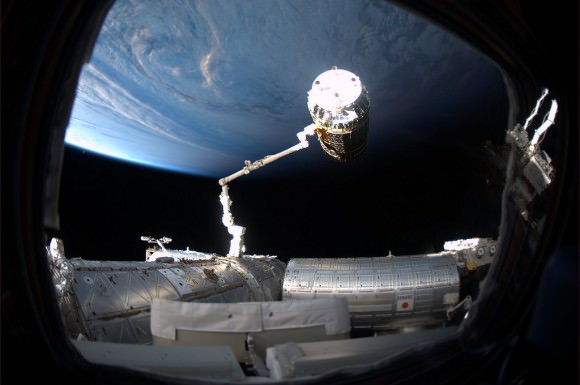
Kounotori2 was grappled by ISS crewmate Cady Coleman at 6:41 a.m. EST with the stations robotic arm while flying about 220 miles above the south Indian Ocean. ISS Tweet and Twitpic Credit: NASA/Paolo Nespoli
After an automatic rendezvous early this morning, the unmanned HTV2 cargo carrier slowly approached the space station from below to a series of ever closer hold points- 250 m, 30 m and 10 m.
Mission controllers on Earth carefully maneuvered the 35,000 pound ship to the final capture distance of about 33 feet (10 meters). The HTV thrusters were disabled and it was placed into ‘free drift’ mode.
ISS astronauts Paolo Nespoli, Cady Coleman and Commander Mark Kelly crew monitored the approach from inside the ISS. The crew was deftly working at the controls of the robotics work station of the Cupola Observation dome.
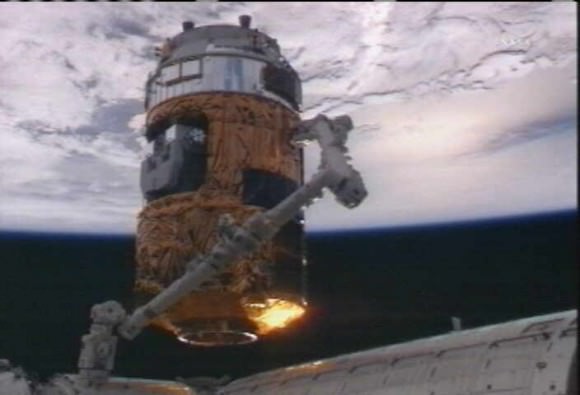
Finally, Coleman gently grabbed the ‘White Stork’ with the 58 foot long Space Station Robotic arm, built and contributed by Canada.
“Grapple completed, Kounotori is grappled!” tweeted and twitpiced Paolo Nespoli from the ISS.
“This demonstrates what we can do when humans and robots work together,” radioed Cady Coleman.”We look forward to bringing HTV 2 – Kounotori – aboard the International Space Station.”
Video caption: Japanese Cargo Craft Arrives at ISS.
From: NASAtelevision | January 27, 2011
An unpiloted Japanese resupply ship, the “Kounotori”2 H-2B Transfer Vehicle (HTV2 ), was captured and berthed to the Earth-facing port of the Harmony module of the International Space Station Jan. 27, 2011. The berthing took place after an automated five-day flight following its launch on the Japan Aerospace Exploration Agency’s H-2B rocket Jan. 22 from the Tanegashima Space Center in southern Japan. The ‘Kounotori’, which means “white stork” in Japanese, is loaded with more than four tons of supplies and spare parts for the six crew members on the orbital laboratory. Expedition 26 Flight Engineers Cady Coleman and Paolo Nespoli were at the controls of the robotic work station in the space station’s Cupola module to maneuver the Canadarm2 robotic arm for the grapple and berthing of the HTV2, which will remain at the orbital outpost until the end of March
Italian astronaut Paolo Nespoli had the honor of driving Kounotori2 to a hard dock at the station. The attachment was completed at 9:51 a.m. EST after Kelly inspected the docking mechanism and confirmed it was clear of debris and ready. 16 bolts firmly latched the cargo freighter into place a few hours later.
The crew will open the hatch to Kounotori2 on Friday, (Jan. 28) at about 7:30 a.m. This is only the second flight of the Kounotori. The barrel shaped vehicle is coated with 57 solar panels.
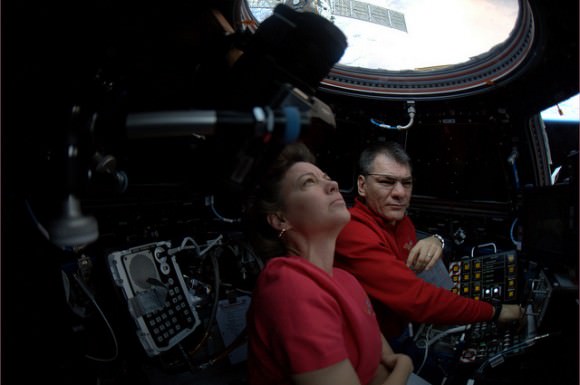
Kounotori2 is loaded with over 4 tons of pressurized and unpressurized cargo, including science experiments, research gear, space parts, clothing, food and water and other provisions from Japan, NASA and Canada.
HTV2 will remain docked at the ISS for about two months until late March. During that time the ISS crew will retrieve all the equipment and supplies for transfer to locations both inside and outside the ISS.
Using the Canadian robotic arm and Dextre robot, a pallet loaded with large spare parts for the station will be extracted from a slot on the side of the cargo ship robot and attached to an experiment platform outside the Japanese Kibo module.
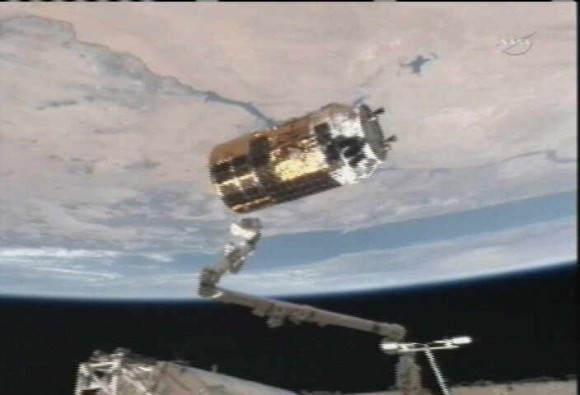
On Feb. 18, the ISS crew will move the HTV from the Earth facing port. They will relocate it 180 degrees to the other side of the Harmony module to the space facing zenith port. This maneuver is required to provide enough clearance for Space Shuttle Discovery so that the orbiter can also safely dock at the Harmony module in late February. Discovery is set to launch on Feb. 24.
The HTV2 docking marks the start of an extremely busy time of orbital comings and goings at the ISS.
A Russian Progress resupply ship launches later today, at 8:31 p.m. EST. Following a two day chase, the Progress will dock on Saturday night (Jan. 29) at 9:39 p.m. and deliver over 6000 pounds of cargo to the station. Watch NASA TV
The European ATV cargo ship – named ‘Johannes Kepler – blasts off on Feb. 15.
HTV2 Rendezvous & Docking Photo Album: Jan 27, 2011
All photos Credit NASA and NASA TV
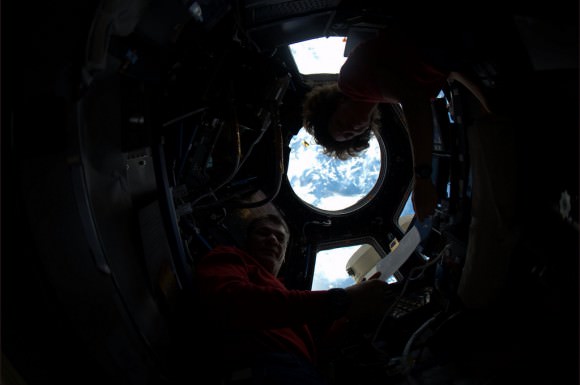

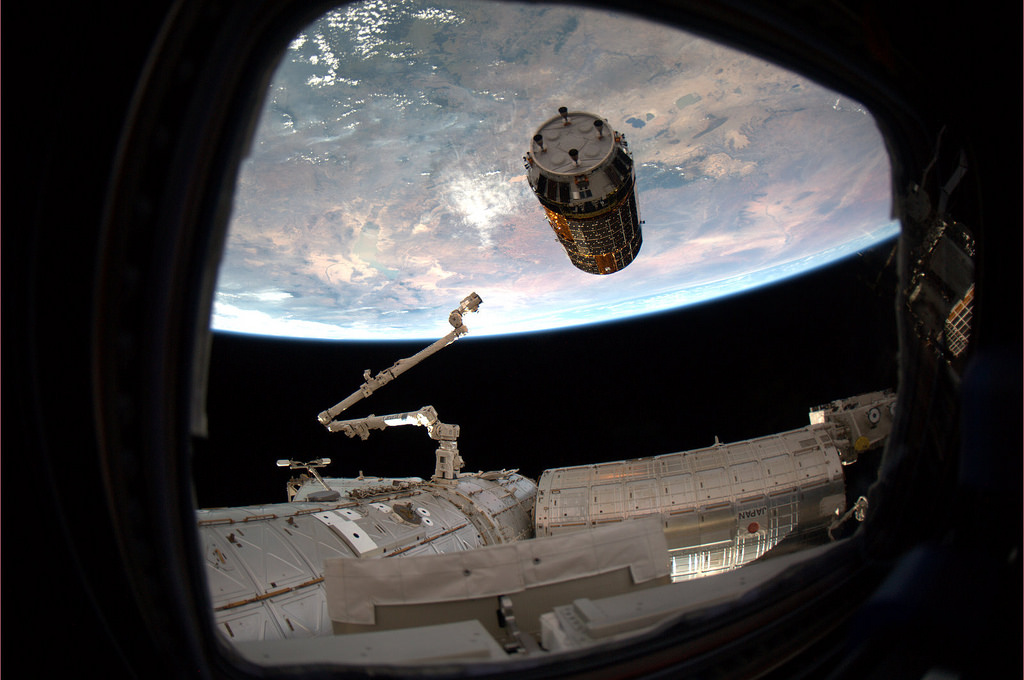
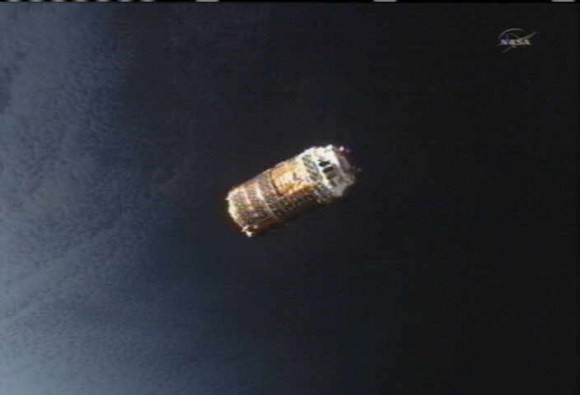
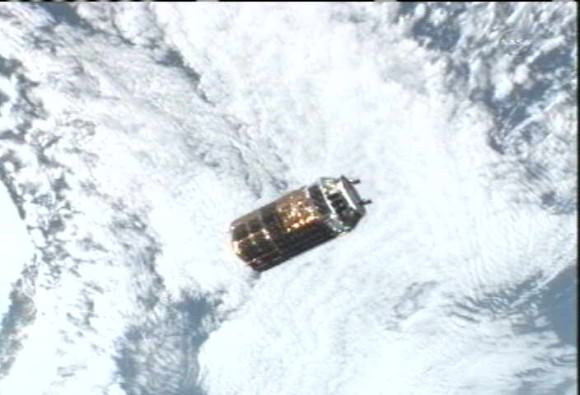
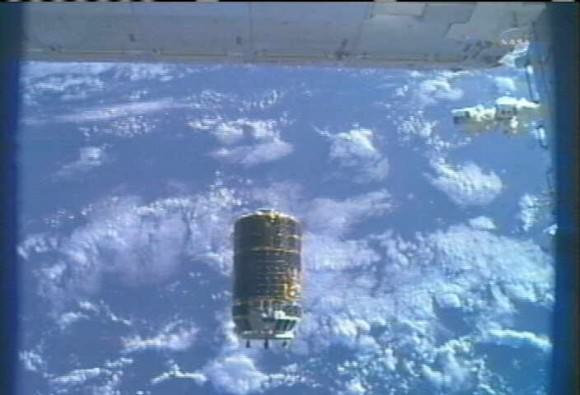
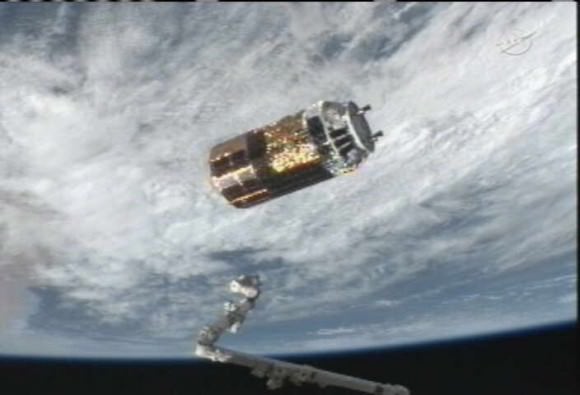
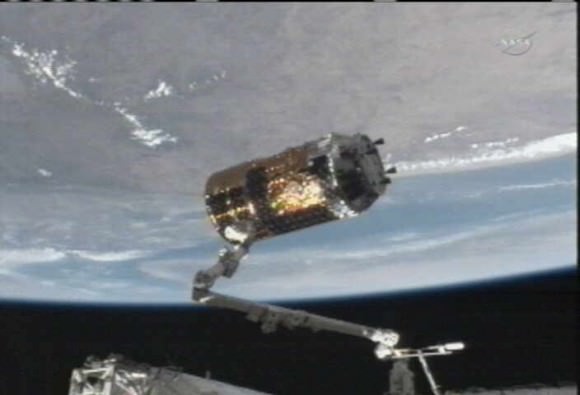
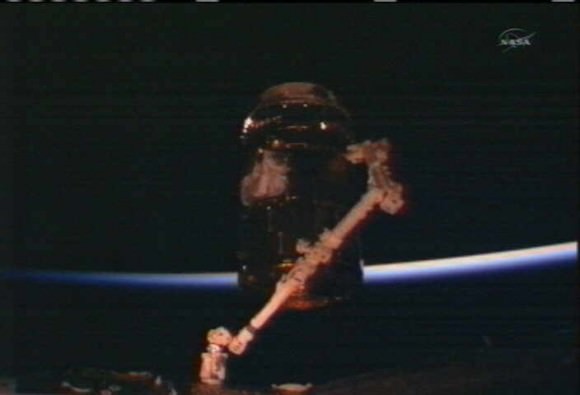
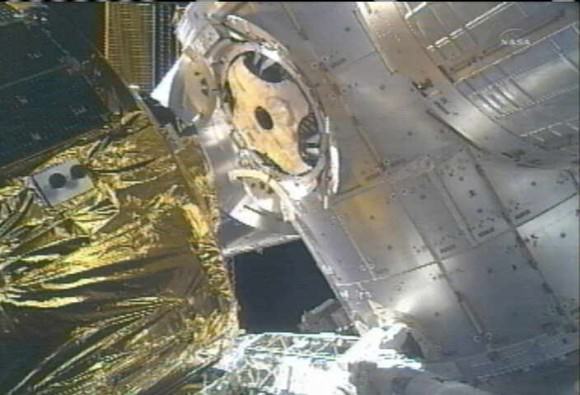
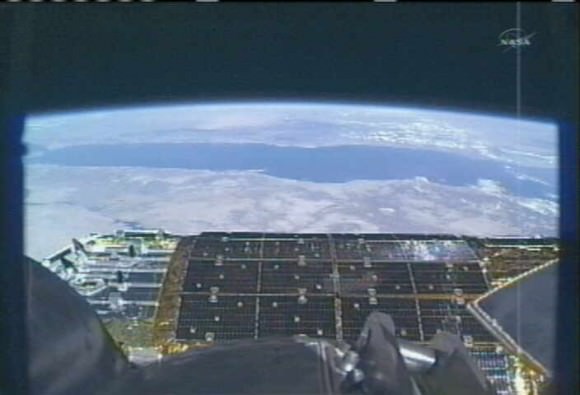
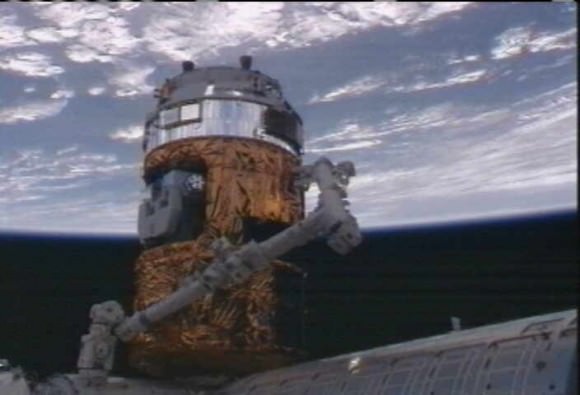
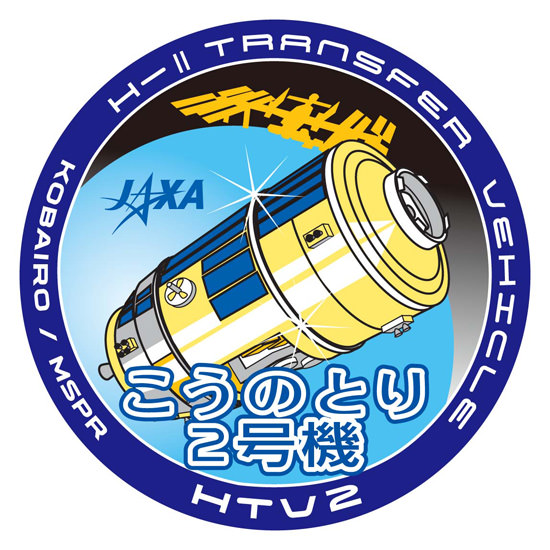
Everyones voice on the video sounds like C-3PO
Nice work
Great stuff! Fine example of the best engineering principle “keep it simple”. No docking guidance system = less cost.
I would be handy as a backup though. At least a manual system.
I am somewhat handy but, I did mean Kounotori. doh!